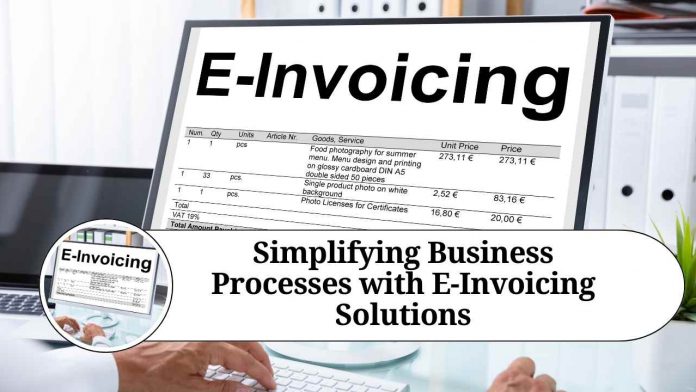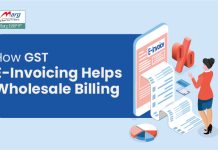Introduction
In today’s digital age, businesses are constantly seeking ways to streamline their operations and increase efficiency. One area that has seen significant advancements is invoicing. Traditional paper-based invoicing processes have long been associated with manual errors, delays, and excessive paperwork. However, with the emergence of electronic invoicing (e-invoicing) solutions, businesses now have a powerful tool at their disposal to revolutionize their invoicing processes. In this blog, we will explore the benefits and functionalities of e-invoicing solutions and how they can transform your business.
What is E-Invoicing?
E-invoicing, also known as electronic invoicing, refers to the automated exchange of invoice data between suppliers and buyers in a structured digital format. It replaces the manual creation, delivery, and processing of paper-based invoices with a streamlined electronic process. E-invoices typically contain all the necessary details, such as the seller’s and buyer’s information, invoice number, line items, quantities, prices, and applicable taxes.
Key Benefits of E-Invoicing Solutions:
2.1. Enhanced Efficiency: E-invoicing eliminates the need for manual data entry and paper-based processes, resulting in significant time savings. The automation of invoicing workflows reduces human errors, accelerates invoice processing, and allows for faster payments. With e-invoicing, businesses can free up valuable resources and focus on more strategic activities.
2.2. Cost Savings: Implementing e-invoicing solutions can lead to substantial cost savings in various areas. By eliminating paper, printing, postage, and storage costs, businesses can reduce their administrative expenses significantly. Moreover, the faster processing and payment cycles can enhance cash flow and reduce the costs associated with late payments or penalties.
2.3. Improved Accuracy and Compliance: Manual data entry is prone to errors, which can lead to invoice discrepancies and delays in payment. E-invoicing solutions automate data capture, reducing the risk of human mistakes and ensuring accuracy. Additionally, these solutions often come with built-in compliance checks, helping businesses adhere to tax regulations and avoid penalties.
2.4. Faster Payments: E-invoicing accelerates the entire invoicing process, from creation to payment. The automated workflows and real-time exchange of invoice data enable faster approvals, shorter payment cycles, and improved cash flow management. This can have a positive impact on the financial health of businesses, especially small and medium-sized enterprises (SMEs).
2.5. Increased Visibility and Insights: E-invoicing solutions provide businesses with greater visibility into their invoicing processes. Real-time tracking and monitoring capabilities allow organizations to know the status of invoices, identify bottlenecks, and take proactive measures. Moreover, the availability of detailed data and analytics can provide valuable insights for financial analysis and decision-making.
Implementing E-Invoicing Solutions:
To leverage the benefits of e-invoicing, businesses need to adopt the right solution that aligns with their requirements. Here are some key considerations when implementing e-invoicing:
3.1. Compatibility and Integration: Ensure that the e-invoicing solution integrates seamlessly with your existing accounting or enterprise resource planning (ERP) systems. Compatibility with standard e-invoicing formats, such as XML or UBL, is also essential for smooth data exchange between suppliers and buyers.
3.2. Security and Compliance: Choose a solution that prioritizes data security and compliance with privacy regulations. Look for features like secure data transmission, encryption, and authentication protocols to protect sensitive financial information.
Conclusion
E-invoicing solutions have emerged as a game-changer for businesses, revolutionizing the way invoices are created, delivered, and processed. By adopting electronic invoicing, businesses can streamline their operations, increase efficiency, and reap numerous benefits.
Read more useful content:
Frequently Asked Questions (FAQs)
Q. What is e-invoicing?
E-invoicing refers to the automated exchange of invoices between suppliers and buyers in a structured digital format. It replaces traditional paper-based invoicing processes with an electronic system, streamlining the invoicing workflow and reducing manual errors.
Q. Why should I consider implementing e-invoicing for my business?
Implementing e-invoicing offers several benefits, including enhanced efficiency, cost savings, improved accuracy and compliance, faster payments, and increased visibility into invoicing processes. It can streamline your operations, save time and money, and improve cash flow management.
Q. Are e-invoicing solutions suitable for small businesses?
Yes, e-invoicing solutions are beneficial for businesses of all sizes, including small and medium-sized enterprises (SMEs). They help SMEs automate their invoicing processes, reduce administrative costs, and improve payment cycles, ultimately enhancing their overall financial health.
Q. How do e-invoicing solutions ensure data security?
E-invoicing solutions prioritize data security by implementing various measures. These include secure data transmission protocols, encryption techniques, user authentication mechanisms, and compliance with privacy regulations. It is crucial to choose a solution that prioritizes data protection and provides robust security features.
Q. Can e-invoicing solutions integrate with my existing accounting or ERP system?
Yes, most e-invoicing solutions offer integration capabilities with popular accounting or enterprise resource planning (ERP) systems. Seamless integration allows for the smooth exchange of data between the e-invoicing solution and your existing software, eliminating the need for manual data entry and ensuring data consistency.
Q. Are e-invoices legally recognized?
E-invoices are legally recognized in many countries worldwide. Governments are increasingly adopting e-invoicing as a standard practice and implementing regulations to support its usage. It is essential to comply with the specific e-invoicing regulations of your country or region to ensure legal validity.
Q. How can e-invoicing solutions help in compliance with tax regulations?
E-invoicing solutions often come with built-in compliance checks that help businesses adhere to tax regulations. They can automatically calculate and apply taxes, validate tax identification numbers, and generate reports required for tax filing purposes. This streamlines the compliance process and reduces the risk of penalties.
Q. Can e-invoicing solutions be customized to suit my business requirements?
Many e-invoicing solutions offer customization options to align with your business needs. You can often configure invoice templates, add custom fields, and tailor workflows to match your specific invoicing processes. It is advisable to choose a solution that offers flexibility and scalability to accommodate future growth and changes.
Q. How can e-invoicing solutions improve collaboration with suppliers?
E-invoicing solutions facilitate seamless collaboration with suppliers by enabling real-time exchange of invoice data. They provide transparency into invoice statuses, automate approvals and notifications, and streamline communication channels. This improves supplier relationships and fosters a more efficient invoicing ecosystem.
Q. What are the cost implications of implementing e-invoicing solutions?
While the initial investment may vary depending on the solution and its features, implementing e-invoicing solutions can lead to significant cost savings in the long run. Reductions in paper, printing, postage, and storage expenses, along with improved efficiency and faster payment cycles, contribute to overall cost reductions and enhanced financial outcomes.




















